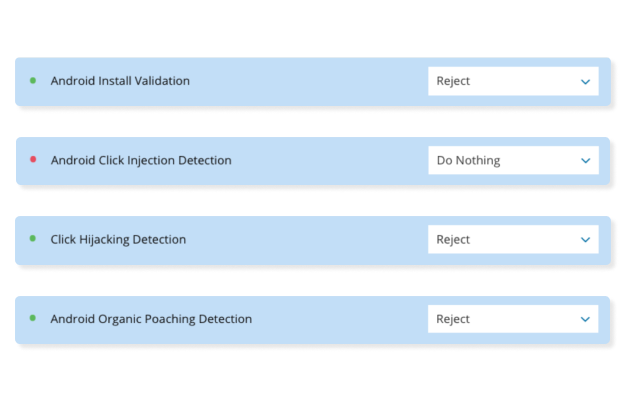Mobile Ad Fraud Prevention
Keep your ad budgets focused on quality users with the industry’s leading Fraud Prevention suite, equipped with always-on fraud detection and the most prevention methods.
Protecting ad budgets for marketing teams around the world!
One holistic and evolving fraud prevention suite, no extra charge
Ready to protect your ad budget from fraud?
Fight fraud before it affects your business
Block more fraud
50+ fraud detection & prevention methods, more than any other provider, to give you superior protection at no extra cost.
Catch fraud before it hits your attribution
Detect and prevent fraudulent traffic in real-time, before attribution, to ensure accurate measurement and reporting, and protect against wasted budgets.
Choose fraud rules that work for your business
Personalize your fraud strategy with granular controls that configure the system to work for your business, including black and white listing.
Analyze reporting for every situation
Better communicate with partners and stakeholders with full reporting visibility into rejected, suspicious and protected data to understand how your app is being targeted by fraudsters.
Rely on unique industry methods
Proprietary detection and prevention methods, like Android Install Receipt Validation & Click Hijacking Protection.

Is ad fraud affecting your business?
Fraud Detection & Prevention Suite FAQ
First-in-industry deterministic Android Install Validation technology. This breakthrough in Android fraud prevention is a gamechanger and vastly more effective at fighting the growing threat of fake install fraud.
Android Click Injection Prevention leverages Google Play Referrer to recognize fake impressions and clicks intended to manipulate attribution crediting after a legitimate user installed the app.
Stop cannibalizing organic users with the industry’s first deterministic solution for more accurate detection of organic poaching on Android.
iOS devices support install receipts which we verify with Apple to ensure the app was actually installed from the App Store on the given device. When a valid install receipt is not detected, the attribution is blocked.
Automatically applies deterministic rules in real-time to block installs before they are attributed. These rules serve as a first-line of defense in the fight against fraud and utilize signals surfaced by the more complex Statistical Methods.
Ready to protect your ad activity from fraudsters?


